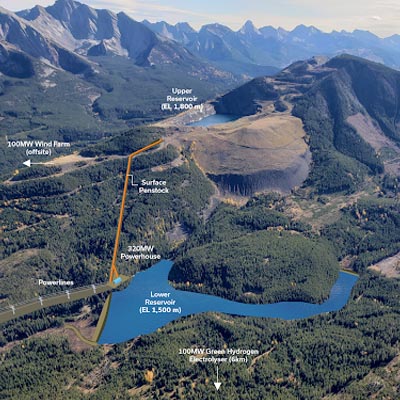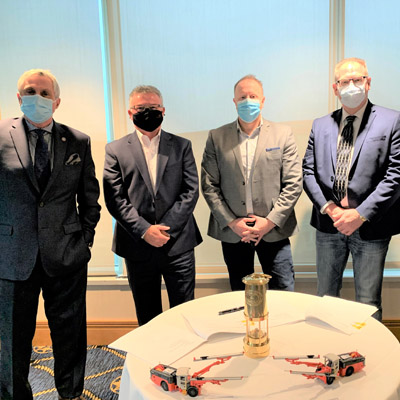This prospector’s secret: never stop looking
This lifelong rockhound enjoys the search as much as the find

Ken Wasylyshen, left, Dave Forshaw and Bob Singh prospect for gold on Philip Creek, a tributary of the Nation River west of Mackenzie, B.C. — Photo courtesy Dave Forshaw
One Labour Day weekend around 1985, prospecting enthusiast Dave Forshaw took his wife and son on a camping trip just west of Mackenzie, British Columbia.
Forshaw drove up a muddy new logging road close to a waterway called Moose Creek until he found a suitable small lake to camp beside. He cleared an area to set up his tent, collected some firewood and busied himself with scraping out a safe area for a campfire.
While clearing his firepit, he noticed his campsite was sitting on top of some good-looking river-run gravel. Forshaw realized the lake he was camped beside was part of a series of ponds that may have once been a river and was now—in places—possibly a dry creek bed.
He quickly ran to his vehicle and grabbed a gold pan he always carried with him.
"I took a shovelful and panned it, and lo and behold, I had pretty good gold in it, and some little pieces of silver, which is quite rare,” Forshaw said. "I panned some more and . . . I thought, 'This is worthwhile; this is what I've always been looking for!' "
Taking the next step
Because of that incident, Forshaw was transformed into a truly committed prospector. With help from his father, an experienced prospector, he ended up staking a nearby claim—and with more help from his father and son, he spent a couple of months for five summers working on it.
But Forshaw, now 63, said looking back, his experience on Moose Creek taught him more than just how to find a reasonable amount of gold. It also taught him something he believes is vital for any successful prospector—a sort of prospector's code.
"Never stop looking," he said. "I think that's probably the big thing."
It's fair to say Forshaw has never stopped looking. The recently retired millwright from Mackenzie now owns three properties and about a dozen claims: nine around Mackenzie in north central B.C. and the rest around Grand Forks, Greenwood and Osoyoos in the province's south.
He also set up his own company, Moose Creek Minerals Ltd., about seven or eight years ago, largely for the sake of his children. They're now part of the company and have some knowledge about the business.
Genetically transferred
But Forshaw never really got into prospecting just to try and get rich, something he admits he never really has. His interest in prospecting may be genetic. Both his grandfathers were keen prospectors. His father and many of his uncles were also avid rockhounds and Forshaw recalls prospecting with family members—especially around his hometown of Greenwood—for as long as he can remember.
He said his attraction to prospecting is linked to his love of the outdoors. He often tells friends he's going prospecting and if he gets tired of that, he'll switch to fishing. Gathering mushrooms, huckleberries, Labrador tea or fiddleheads are also acceptable alternatives.
When it's time to get serious
However, when Forshaw is prospecting, he's all business. He tries to recognize what he sees in the rocks and looks for indicators that might lead to an important find.
For example, when he's walking in the Takla volcanics west of Mackenzie he keeps an eye out for epidote, a green stone that can be a good indicator of a copper/gold porphyry deposit. At other times if he spies barite, a dense mineral, he knows it may surround deposits of zinc, lead and silver.
Forshaw’s prospecting career hasn't limited him to just searching for minerals. At times, he's turned into a treasure hunter. For example, Forshaw has spent quite a bit of time unsuccessfully looking for lost gold bars near a claim he has near Rock Creek in southern B.C. In 1896, a co-owner of a mine near the mining town of Camp McKinney was robbed of three gold bars by an armed bandit. Later that year the suspected robber was killed in a shootout, but two of the bars have never been found.
Unexpected treasures
Forshaw isn't disappointed with his lack of success seeking treasure. He said there are lots of prospectors who have found things that weren't even supposed to be in areas they were exploring. Over the years, prospectors in B.C. have found diamonds, opals and porphyry deposits in a province where so-called experts said searching for such items was a waste of time.
So Forshaw said that leads to another important axiom of what might be the prospector's code.
"I say, 'Never say never,' " he said. " 'Don't take anything for granted.' If you see something, look at it for what it is, not what you're supposed to find.”




